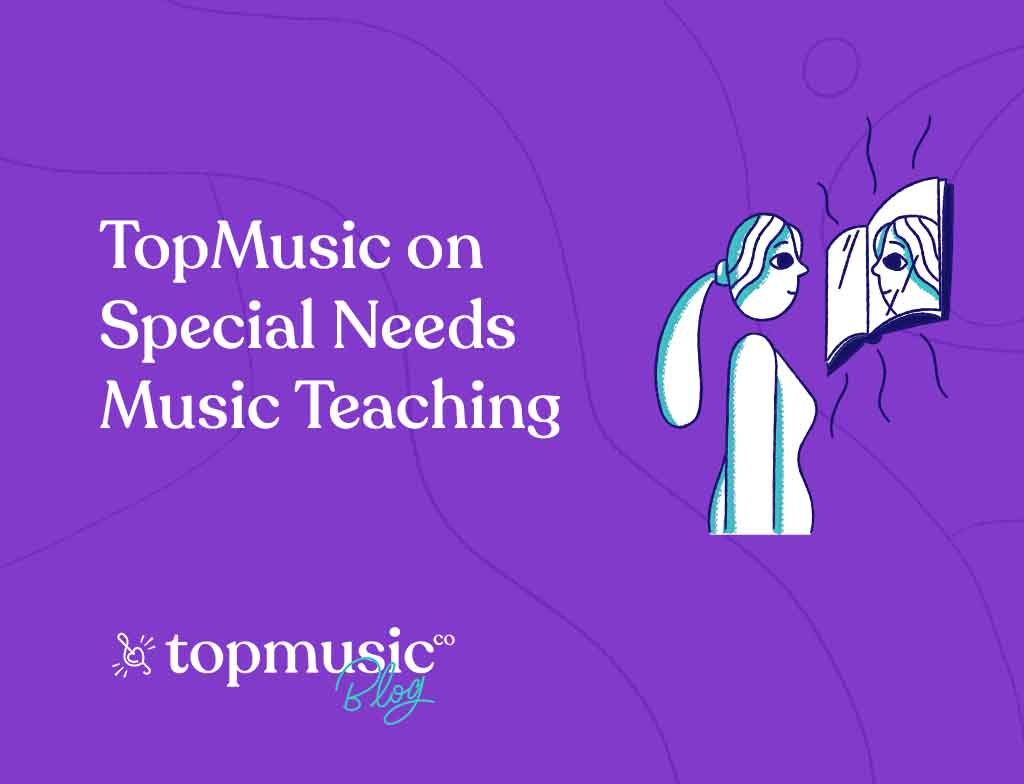Feel more confident today teaching for special needs, with our tips, classroom strategies, method advice and more
Have you ever felt a little out of your depth when teaching special needs piano students? Perhaps you notice a trusted approach isn’t quite working for one of your students, that distractions are sidetracking progress, or even that you’re feeling not so confident with inquiries that begin with, “My child has special needs and would enjoy music study. Are you well-prepared to teach them?”
Working with students with exceptionalities can be a very rewarding experience. By understanding our students’ needs better and adapting our music learning environment, we can offer a tailored learning experience – and feel more confident saying yes to music teaching for special needs students.
In this roundup article, I’ll bring the viewpoints and expertise from many teachers focussed on this teaching topic, to share with you current information on methods, understanding diagnoses and behaviours, learning to set the right studio environment, and how to adjust your teaching to suit students with exceptionalities. These are compiled from teachers who have shared their extensive knowledge with me over the years.
Strategies Roundup for Teaching Special Needs Music Students
Making an Inclusive Studio for All Abilities
Teaching Points for Autistic Students from a Clinical Psychologist
Conclusion & Free Download: Special Needs Piano Teaching eBook
I am often asked by teachers for help in this area, so I’ve invited a number of people over the years to share best practices and methods you will want to know for special needs teaching.
Special guests include:
Dr. Erin Parkes, director of the Lotus Centre for Special Music Education in Ottawa, shares three points in her empathy-based approach article.
To have success connecting with your student, first assume “kids do well if they can,” as Dr. Ross Green, a clinical psychologist writes. With an empathy mindset, we can start to understand the student’s experience, and why they choose behaviours. Becoming curious instead of frustrated is the first step to understanding and then improving good outcomes in the lesson.
What can you learn from their behaviour choices? Might something be causing anxiety? All behaviour is a form of communication.
Teachers often mention classroom behaviour management as one of their growth areas for special needs teaching. Being able to connect the dots from inappropriate behaviours back to lagging skills is one of the steps to developing a classroom plan that works for both of you.
Teachers can then make an action plan, coming from the needs the student has, and any accompanying lagging skills that drive behaviour choices, and make a tailored plan, coming from empathy.
An example: a teacher has a studio with bright musical art, many games and manipulatives, and special lamps. Because they have a teaching day set aside for with students with exceptionalities, they might adjust the studio that day to remove the extra distractions, dim the lights and noises (or smells), and to make a quieter space. Their student will then have an easier time focussing during the lesson.
Cathy Hirata, a special needs-focussed teacher in the San Francisco Bay area, advises:
Start where you are – you don’t have to be a specialist or expert to start teaching students with different abilities. Enlist the support of the student’s parents or caregivers. Also listen to know what level of support to expect from them in the lessons relationship. Are they involved in lessons? Absentee? Knowing how much you’ll work together makes a difference.
Find the dominant learning style of the student – kinesthetic? aural? visual learner? And then adjust your learning presentation or method choice depending on this student’s abilities.
Find Cathy’s article here on five tips for teaching special needs students, from a veteran specialist teacher.
Clinical Psychologist Dr. Lydia Meem relates these points to consider:
Autistic students can be literal thinkers. A direct approach can be helpful so they can clearly understand directions. For example, rather than saying, “practice this for next lesson,” reframe it: “Practice this piece 4 times each day.” They can benefit from clear step-by-step instructions moreso than you may normally provide in assignments.
Students who get sidetracked easily can again benefit from simple redirects:
“Stop talking now – it’s time for playing.” is clear without over-explaining, and is appreciated. It shows respect for the student because you’re providing not just a directive but an explanation.
Autistic students can miss nonverbal cues we rely on as well, such as “Okay thanks.” when you would like them to pause playing, or standing up to signal a new activity. It is better in this case to be more direct, “Thank you for playing. Now it’s my turn to discuss.”
Dr. Meem shares more on making successful transitions for autistic students, and using good framing language in this article on music and autism: lessons learned from a clinical psychologist.
There is so much more. Please peruse the podcasts and articles linked above for more perspectives from these guest writers and speakers. I hope these teaching perspectives and links gleaned from some of my guests will help give you more confidence to teach students of all abilities and needs.
As a thanks for reading, I’ve made this free ebook to help you develop more strategies, taken from Selena Pistoresi’s wonderful course in TopMusicPro on Special Needs Teaching. Members, you can take Selena’s course right now in the Academy (Studio).
An all-in-one digital guide for a beginner teacher working with special needs students, or an experienced teacher looking to hone their skills toolbox. This is: The TopMusic Guide to Teaching Special Needs Music Students. Get your free digital copy below:
